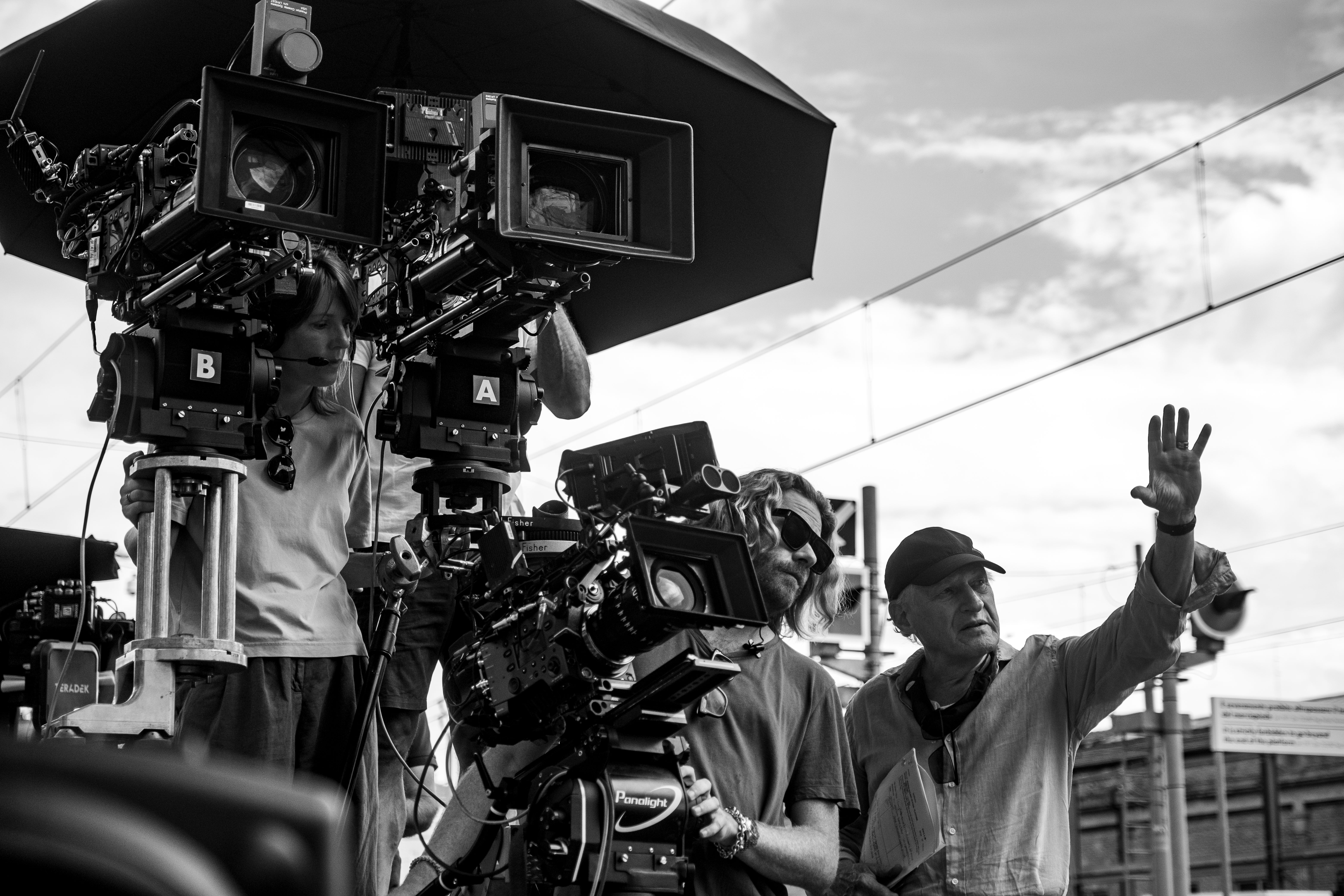
01-16-2024 - Case Study
Shot on VENICE 2: DP Erik Messerschmidt, ASC Paints a High-Speed Vision of ‘Ferrari’ with Michael Mann
By: Oakley Anderson-Moore
They wanted to shoot fast cars. They needed an even faster camera. Rigged to race cars or in the backseat with the RIALTO, the VENICE 2 was along for the ride.
Erik Messerschmidt’s recent list of collaborators is the stuff of dreams. His visual acuity and ability to support directors has given him a knack for working with auteurs, like David Fincher on The Killer and Ridley Scott on Raised by Wolves. With Ferrari, he can now add Michael Mann to that list.
“I was thrilled to have the opportunity to work with Michael Mann,” says Messerschmidt. “I really admire him as a filmmaker.”
It didn’t hurt that Messerschmidt also loves motor cars.
“It spoke to everything I love in the world. I love cars. I love Italy and I love historical drama.”
Messerschmidt also loved that Ferrari was not a traditional biopic. (Some reviewers are going so far as to call it an anti-biopic.) Set in the summer of 1957, with the auto empire of Enzo Ferrari (Adam Driver) in crisis, the ex-racer turned entrepreneur decides to have his drivers compete in the Mille Miglia, a treacherous 1,000-mile race across Italy.
Messerschmidt sat down with Sony Cine to talk about creating the film’s painterly look and taking the VENICE 2 along this treacherous terrain at full speed.
Pulling the film’s look from Caravaggio and Michael Mann’s Ferrari collection
Messerschmidt started the collaboration with the most important question that he ever asks.
“What do you want me to look at?”
Michael Mann started with Caravaggio.
“He was interested in exploring Italian painting,” says Messerchmidt. “I love that era of painting and portraiture. The Venetian school; masters like Titian and Tintoretto. I presented those sorts of ideas to Michael as an idea for the look of the film. “
Messerschmidt says the iconic Italian chiaroscuro-look he strived to create matched with the way the light entered the Italian architecture on set naturally. The film exudes a masterful, painterly quality.
The other huge influence on the film’s look was Mann’s private library.
“Michael is the most fastidious person I know,” says Messerschmidt. “He's incredibly tenacious, and he's extremely concerned with historical accuracy. In the case of Ferrari, he was very concerned about the behavior of the cars and making sure the physics were correct. You don't cut to a downshift just because it makes the edit better, you cut to a downshift at a time in the race when the character should be downshifting, the weight shift in the car around a corner needs to look accurate.”
To ground his vision in real details, Messerschmidt visited Mann’s library, a towering room of books on topics like true crime, corporate greed, and masculinity. In one corner, a whole section on Ferrari, including newsreels, photographs, transcripts, and location scouts.
“The Academy should take it, it's extraordinary.”
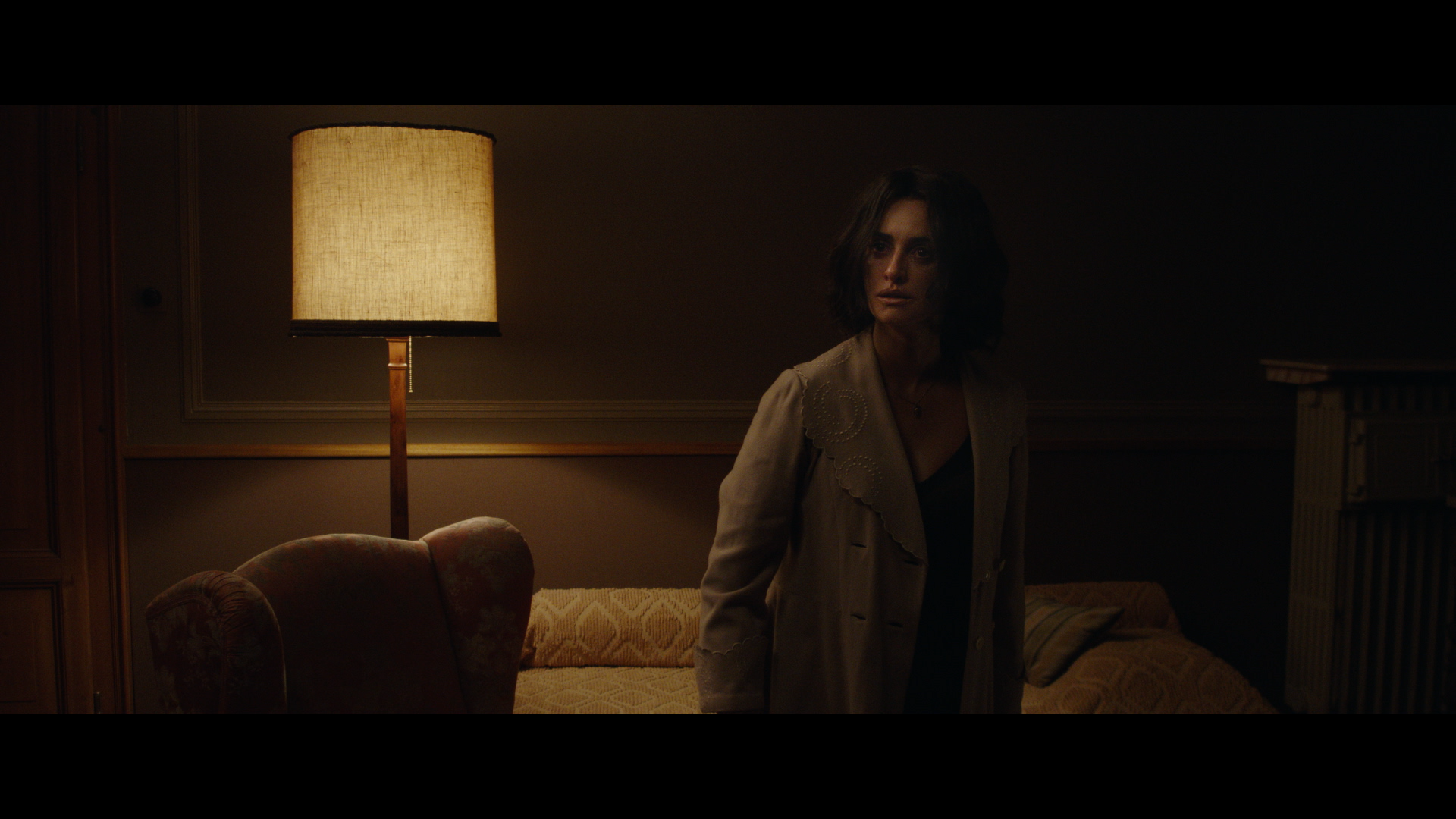
Why Messerschmidt picked the VENICE 2 to suit Michael Mann
At first, Messerschmidt was worried about the need for speed – and not just during the racing scenes.
“I had some fear because I knew that Michael wanted to work extremely quickly, and that we would sometimes have 6, 7, 8 cameras working, particularly in day exteriors,” explains Messerschmidt about having so many cameras that would need to be exposed for different lenses and locations, sometimes miles apart.
“I wanted to be very protective of the iris to keep the visual integrity of the film there. And I didn't want to control exposure with the iris, if I could avoid it. I wanted to work near wide open. So I was worried about being in a situation where I had to swap glass filters.”
The solution for Messerschmidt came from his good friend, Academy award-winning cinematographer Claudio Miranda.
“I was talking to Claudio about his experience on Top Gun and he said, ‘Honestly, it was the internal NDs that sold me on the VENICE.’ This resonated with Messerschmidt – he didn’t want to slow down Michael Mann on set. “I didn't want to stop Michael to do a filter change between takes, if the sun came out.”
The internal NDs of the VENICE 2 made that possible.
“The NDs are game changing, I think it's extraordinary,” says Messerschmidt. “That saved me an enormous amount of headache on set. And I think it helped the film – I think it helped Michael work at the pace he wanted to work without feeling inhibited by the process as much, with glass filtration.”
In addition to the game-changing internal NDs, Messerchmidt cites the color reproduction, dual ISO, 8K capability, and going handheld in small spaces with the world’s first RIALTO 2 as the highlights of working with the VENICE 2 on the film.
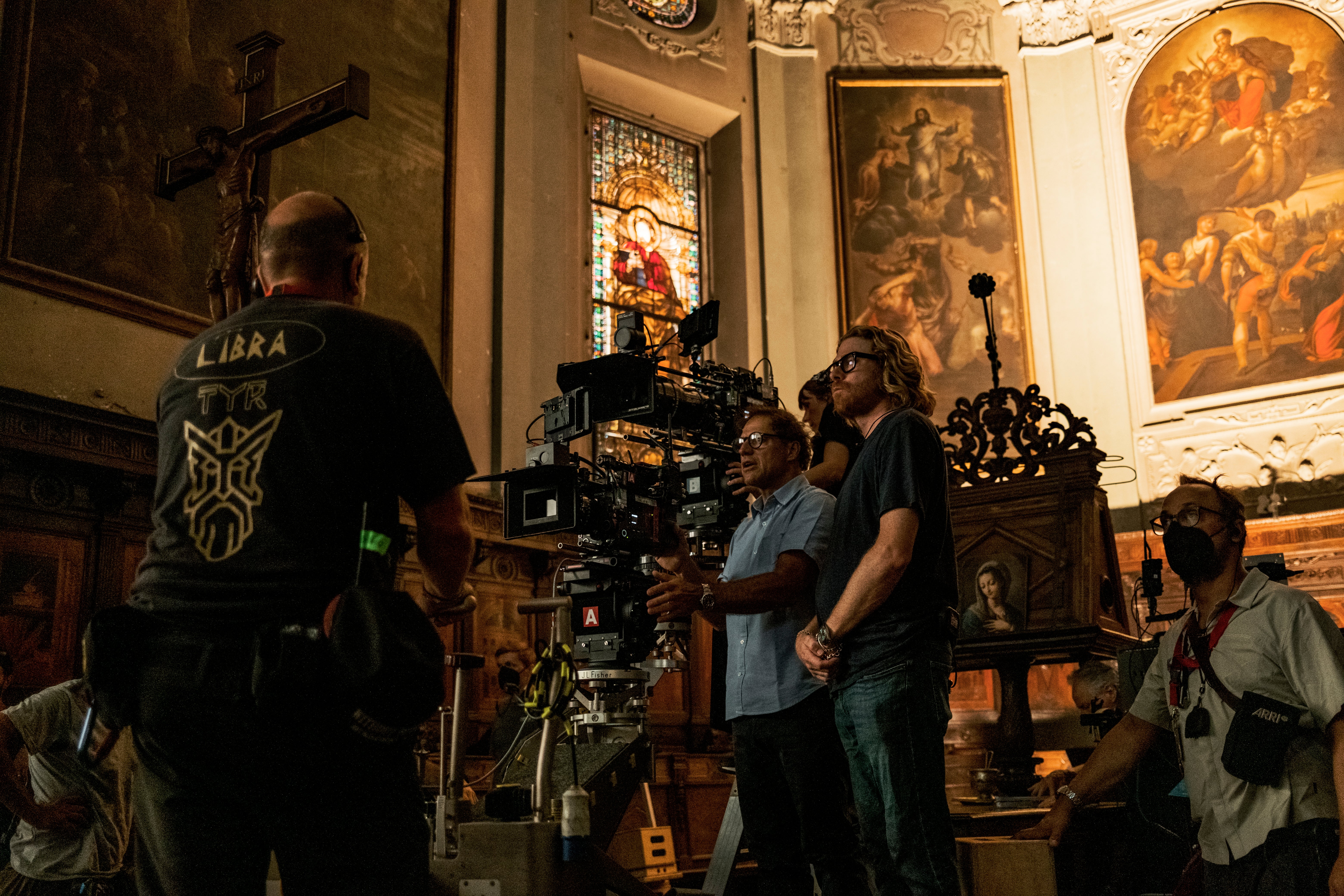
I love the color; the color reproduction is fantastic,” says Messerschmidt about the VENICE 2. Color was extremely important in Ferrari because it’s how we see the two different worlds that Enzo Ferrari lives between: racing Ferrari and running it. “The film is very much about contrast.”
While the majority of the film was shot on beautifully modified Panaspeeds, Michael Mann is known to have a penchant for a modified periscope lens called the Skater Scope.
“It puts the lens very close to an actor's face without their knees running into the steadicam sled,” describes Messerschmidt. “So Roberto could operate the camera, and we could get the lens right here, without the camera impacting Adam or Penelope. A lot of the very dramatic moments in the film are shot with that technique.”
According to Messerschmidt, the only problem with the Skater Scope is that it’s a slow lens. He didn’t want to have to light an entire set to a 5.6 just in case Mann decided to use it.
“The VENICE 2, the dual ISO capability of the camera made that easier. I could light the set to 800 ISO or 1000. And then if Michael felt that this particular moment necessitated the Skater Scope, he could turn to me and say, ‘I want to use a Skater Scope’ and I wouldn't need an hour and a half to relight the set…The tools supported me enormously in solving that problem for him.”
The camera’s overall versatility also aided in Messerschmidt’s favorite scene in the film, where Laura (Penelope Cruz) and Enzo (Adam Driver) have an argument about their young son who passed away.
“That scene in particular is very much about blocking. You have Laura, she's the strongest character, I think, in the film. She's static, sitting in the middle. Enzo is orbiting around her. She is shot static, and the camera moves with him. That's Michael, understanding how to stage a scene dramatically.”
Mann and Messerschmidt were very deliberate that at the most vulnerable moment of the scene, when Enzo grapples with the gravity of his occupation, the camera would be as close as eight inches from his face.
"Michael, as a filmmaker, I think he needs the camera to be free,” says Messerschmidt. “He needs the actors to be free. He doesn't want to be held back by the process of filmmaking…It was about supporting an environment where Michael could always feel free to move the camera.”
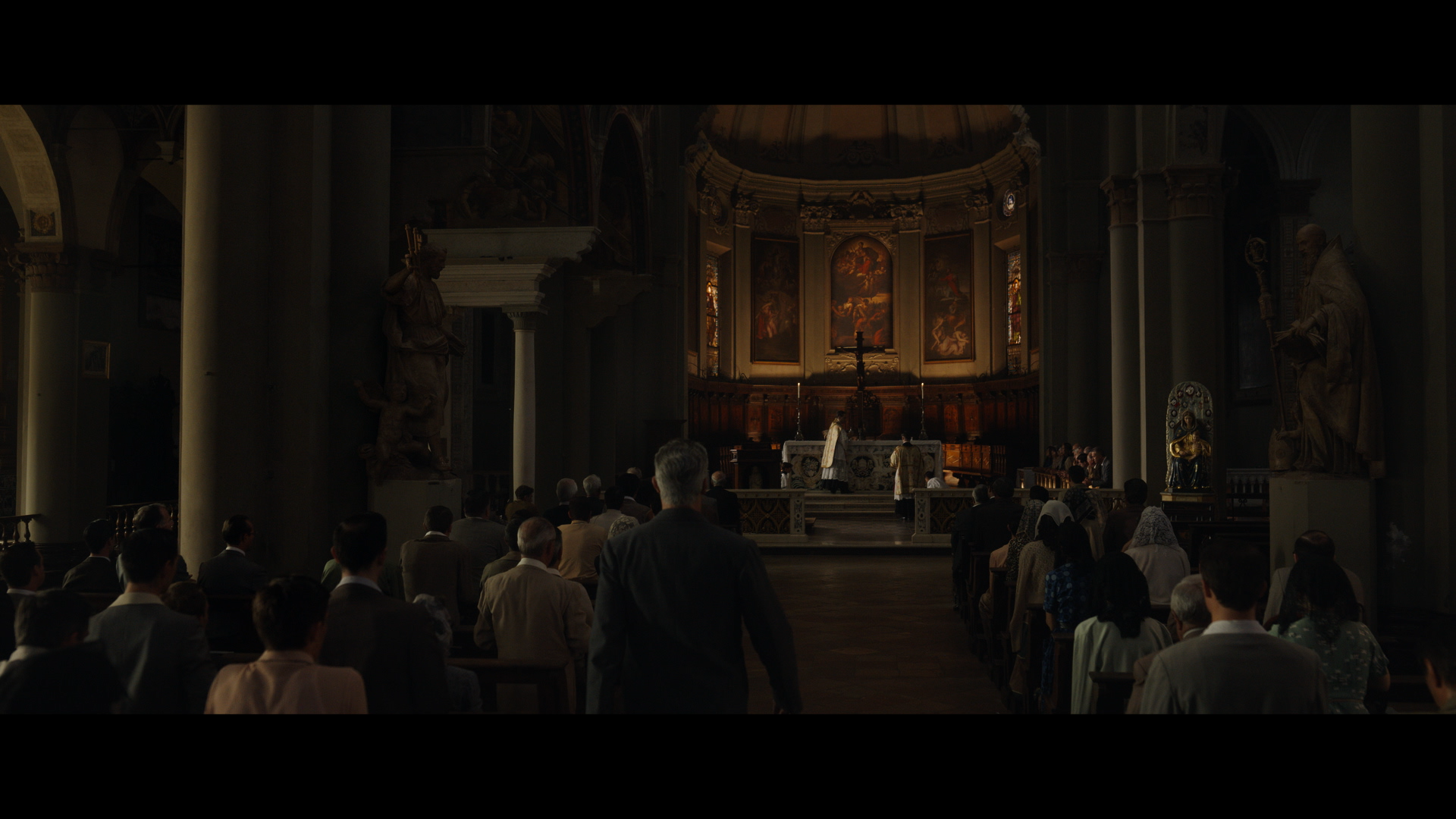
Creating visceral, raw racing scenes
Mann and Messerschmidt wanted to make the racing as real as possible.
“He didn't want to do the Fast and Furious stuff, where we're fetishizing the cars,” explains Messerschmidt on Michael Mann’s quest for authenticity. “He wanted the audience to feel like they could smell the gasoline. He wanted the audience to feel like they're getting hit with stones, and they've got to wipe grease off their glasses.”
To mount multiple Sony VENICE 2 bodies to the race cars in the film, the team designed the tubular chassis to be easily rigged, and relied on the super strong lens mount of the VENICE 2 to hold up under insane racing conditions.
“We did a lot of testing,” describes Messerschmidt. “We were going to drive these cars in the gravel hard, and one of the concerns was making sure that we had a really strong rigid mount that would keep the lens on the camera and not lead to a bunch of bad focus issues. That was great.”
When inside the car, it meant using the first ever prototype of the RIALTO 2.
“Roberto De Angelis, who's responsible for an enormous part of this film as the camera operator, was sitting in the car with the drivers, many times handholding the Rialto 2.”
All the race sequences in the film are crazy fast and completely real, and the camerawork holds up.
“Michael wanted the cars to go at the real speeds,” explains Messerschmidt. “He didn't want to play these camera tricks where we under-crank, or we shoot everything in profile to make it look faster. He wanted the cars to go 150 miles an hour.”
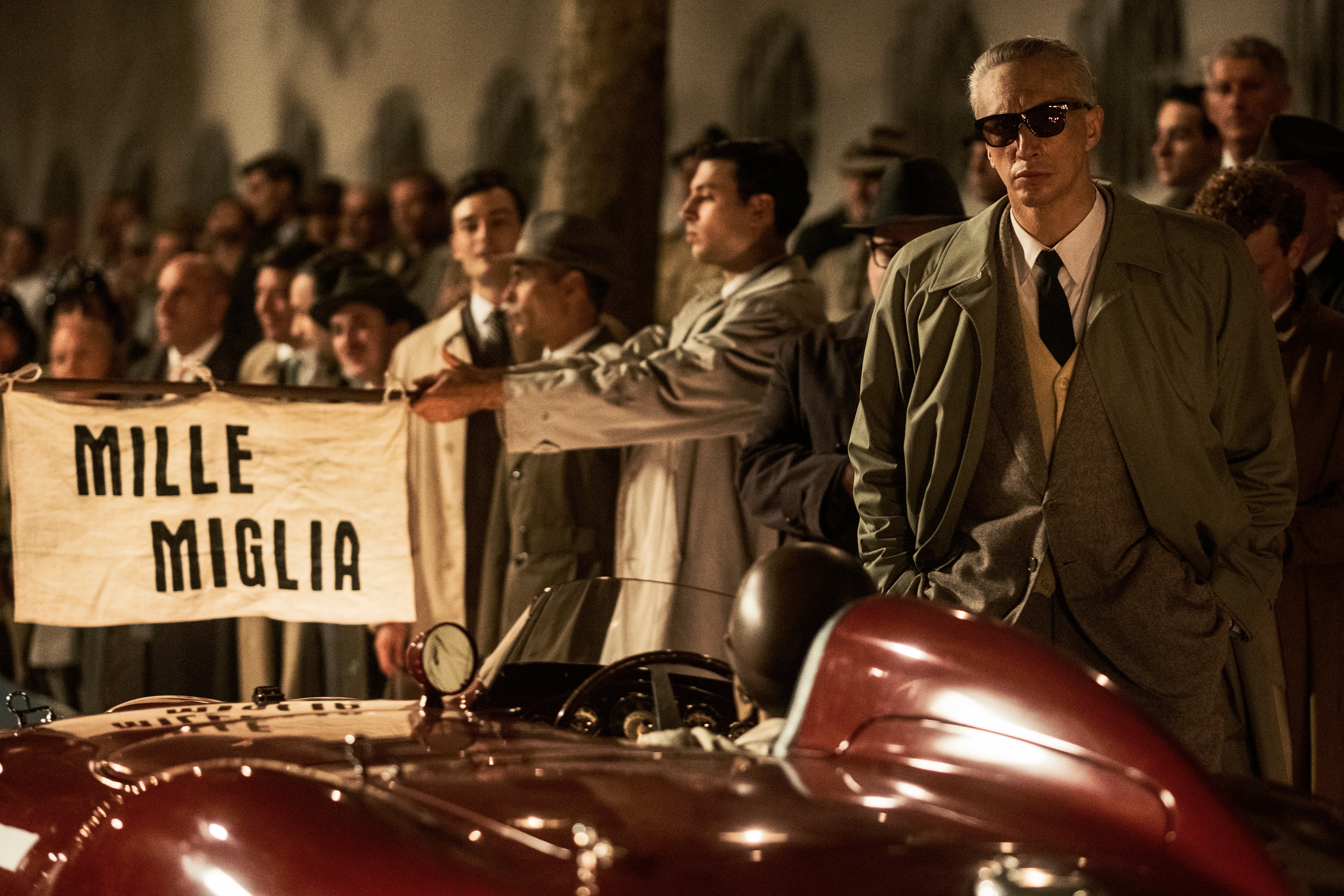
When working with directors like Michael Mann, Ridley Scott, David Fincher, learn to listen
“I like working with older, experienced directors in particular, because their process is quite refined at this point in their careers,” explains Messerschmidt. “Michael, Ridley, David, they know what works for them. I just try to listen honestly, listen to what they're responding to and what they're excited about, and help them make their film.”
Ferrari is out in theaters now.




